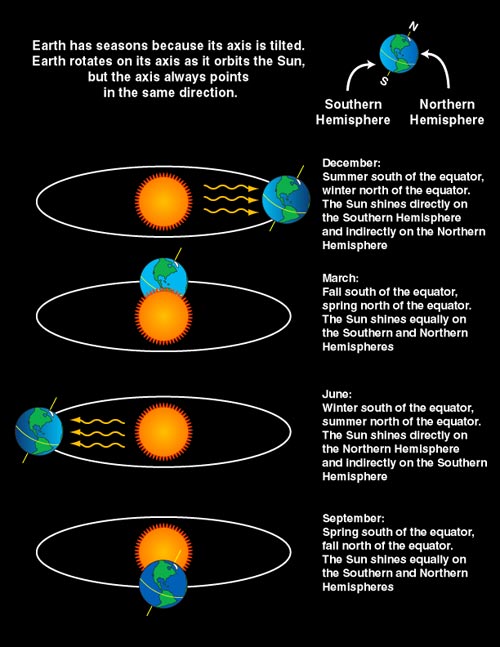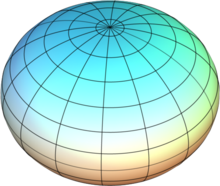How does the tilt of the earth cause changes in climate in the world?
Many people tend to think that seasons are caused by the distance of the Earth from the sun. You may be surprised to learn that it is actually the tilt of the Earth that causes the season(1).
Astronomers know that the earth is closest to the sun in January and furthest in July(2). Why is it that when it is summer in the northern hemisphere it is winter in the southern hemisphere? If the distance from the sun was the only factor, this would impact the temperature of the whole world at the same time(1). But then, why is it that America and Colombia don’t have the same season at the same time? It’s not possible for distance from the sun to be the reason we have seasons(2).
The Earth is tilted relative to the sun, which is the reason we have seasons (1,2)
When the North Pole of the earth is tilted toward the sun, it is summer in the northern hemisphere and winter in the southern hemisphere. On June 21st, the northern hemisphere is tilted the most towards the sun which is called summer solstice(2). December 21st the northern hemisphere is tilted away from the sun which is called winter solstice(2). Earth has seasons because its axis doesn’t stand up straight(3). We can conclude that the tilt of the earth is the cause of seasons.

Regions that are farther from the equator will have 4 seasons. When it is winter the temperatures fall because there is less sunlight and therefore, less heating. Alternatively, when it is summer it causes longer amounts of sunlight and therefore warmer temperatures. Spring and fall are the transition seasons. They have variable temperatures as the areas are either warming (winter to summer) or cooling (summer to winter) (4).
Places that fall across the equator have consistent amounts of sunlight and therefore the temperature is mainly constant. Some of these places May include Congo, Kenya, Tanzania, etc. These places have only rainy and sunny seasons (5).
Before I did the research I used to think that seasons were caused by the distance of the earth from the sun. Surprisingly I found out that it was the tilt of the earth and it makes more sense as to why we have seasons.
I have Questions For You
- Why are there different numbers of seasons in different places?
- How many seasons do you have in your country?
- What did you think was the cause of the seasons?
2:https://www.education.com/science-fair/article/hot1/
3:https://spaceplace.nasa.gov/seasons/en/
- https://www.nationalgeographic.org/encyclopedia/season/
5.:https://www.worldatlas.com/articles/do-places-near-the-equator-have-seasons.htm


Hey Denis, I really enjoyed reading your post! While I pride myself on being someone who is in the know on the topics of global warming, climate change, and the Earth’s movements, I now realize that I know very little about the actual ins and outs of the topics. I would also love to answer your questions:
1. Because, like you said, places that fall across the equator have consistent amounts of sunlight and therefore the temperature is mainly constant, there can only be rainy and sunny seasons. Due to the lower amount of fluctuation in sunlight and external factors, there are a lower number of possible seasons.
2. In my country, Canada, we experience four relatively distinct seasons: Winter, Spring, Summer, and Fall. Winter is cold and normally causes some snow to fall, Spring starts bringing out the sun and can sometimes bring a lot of rain, Summer is hot and brings tons of sunlight, and Fall quite cold and causes the leaves on trees to turn orange and brown.
3. Before reading your post I already had a basic level of knowledge about Earth and its seasons, and how they were caused by the location of the suns rays on the surface of our planet, but I most definitely know more now.
Some links you may find useful are:
https://climatechange.lta.org/climate-impacts/shifting-seasons/#:~:text=How%20are%20Seasons%20Shifting%3F,to%20bloom%20earlier%20than%20typical.
https://www.insurancejournal.com/news/national/2018/07/20/495674.htm
https://www.britannica.com/science/season
https://www.weather.gov/lmk/seasons
https://www.scientificamerican.com/article/seasonal-science-the-reasons-for-the-seasons/
Keep up the great work!